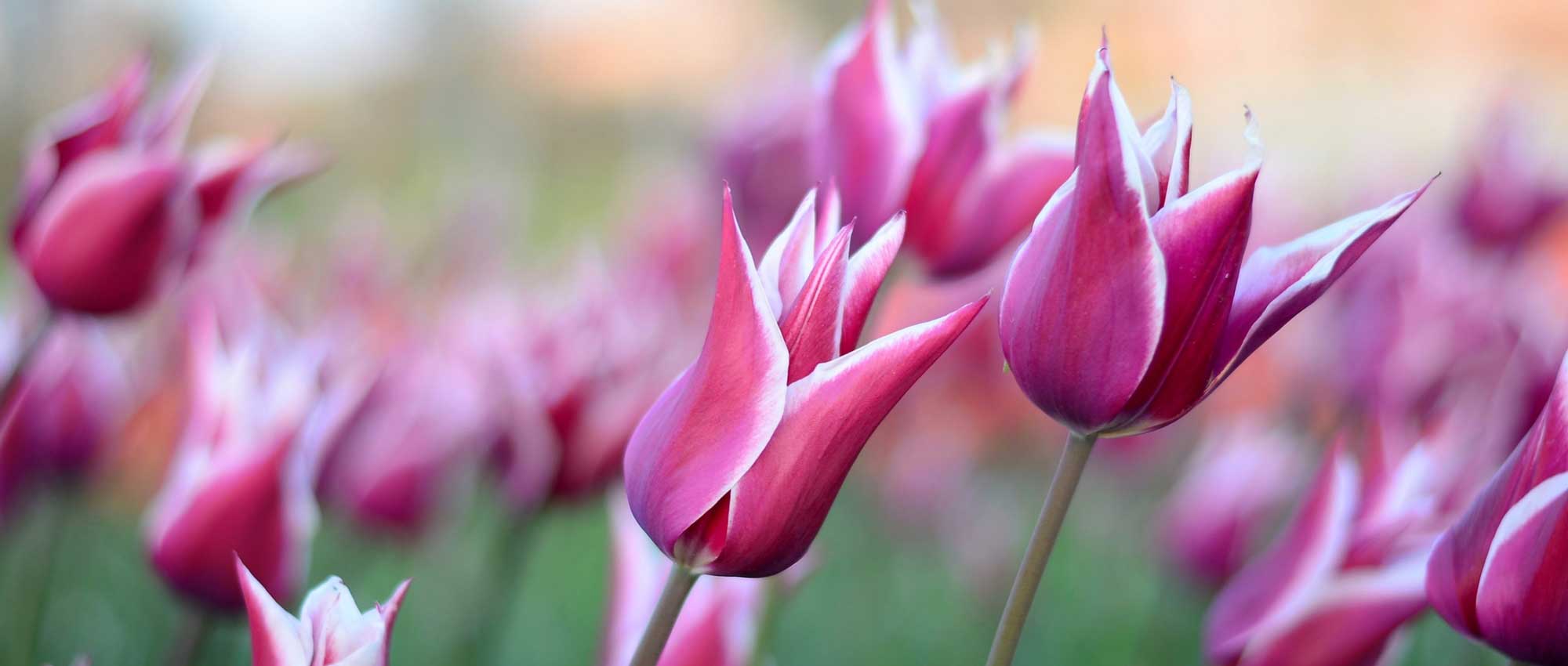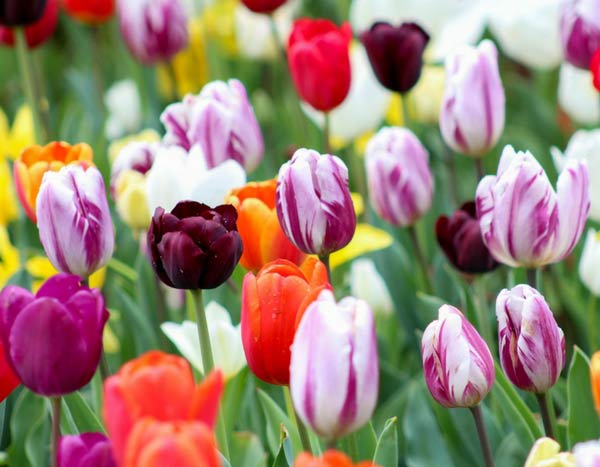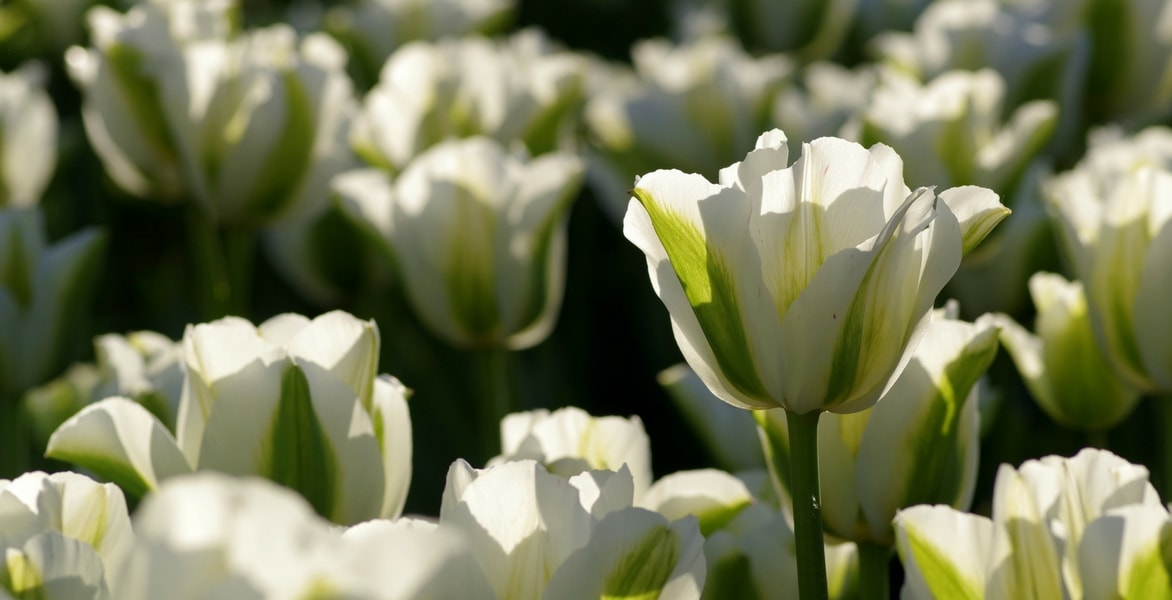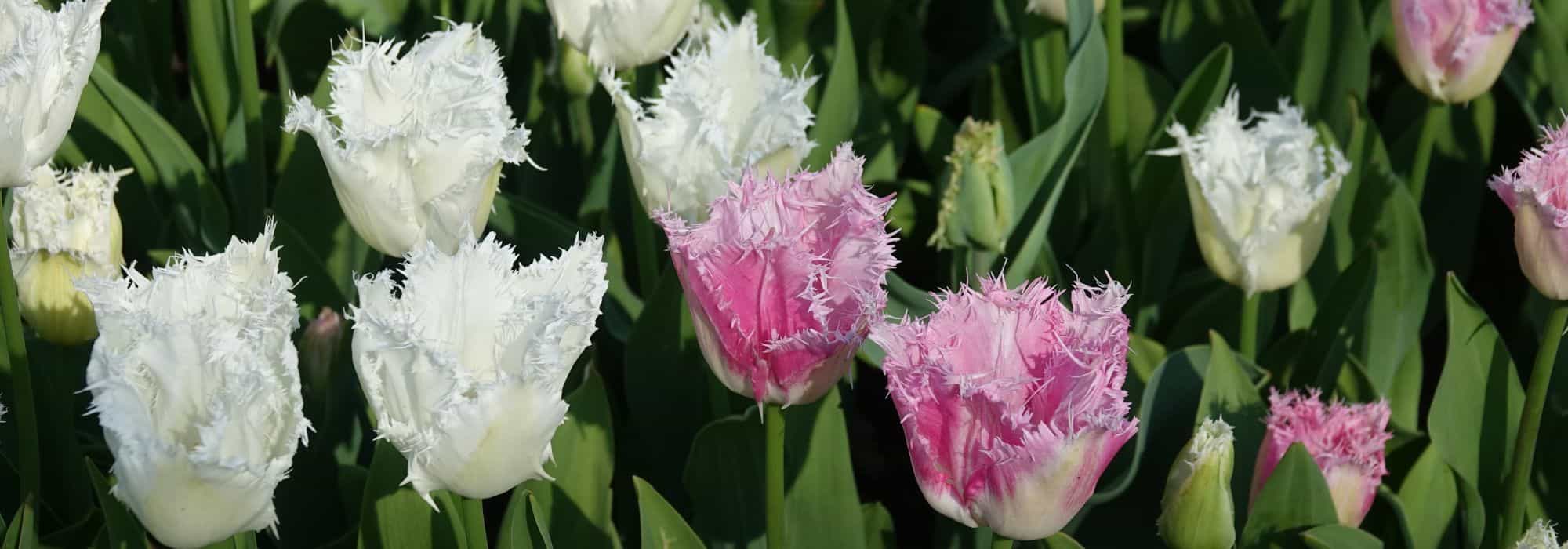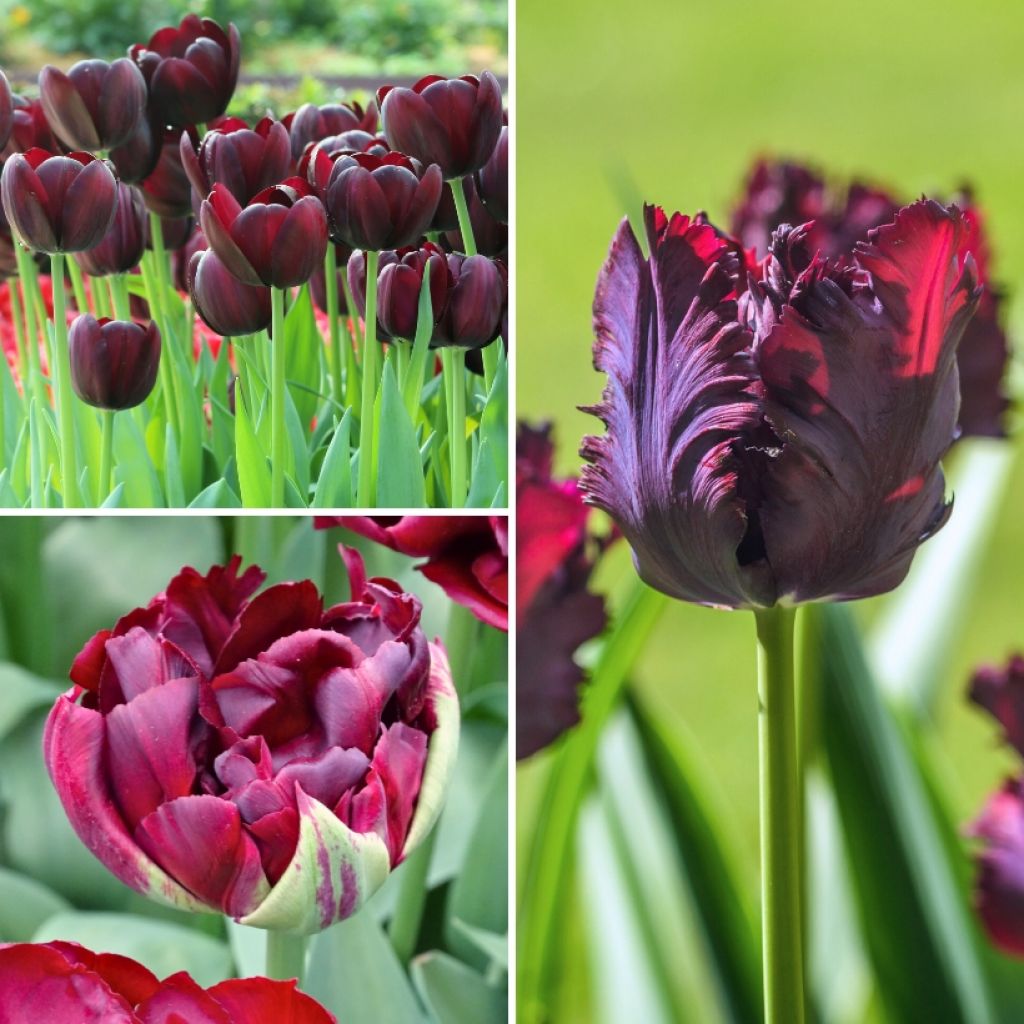

2 Months of Black Tulips Collection
2 Months of Black Tulips Collection
Tulipa Palmyra, Black Parrot, Black Jack
Special offer!
Receive a €20 voucher for any order over €90 (excluding delivery costs, credit notes, and plastic-free options)!
1- Add your favorite plants to your cart.
2- Once you have reached €90, confirm your order (you can even choose the delivery date!).
3- As soon as your order is shipped, you will receive an email containing your voucher code, valid for 3 months (90 days).
Your voucher is unique and can only be used once, for any order with a minimum value of €20, excluding delivery costs.
Can be combined with other current offers, non-divisible and non-refundable.
This plant carries a 6 months recovery warranty
More information
We guarantee the quality of our plants for a full growing cycle, and will replace at our expense any plant that fails to recover under normal climatic and planting conditions.
Would this plant suit my garden?
Set up your Plantfit profile →
Collection items (22 plants)
Description
We offer you a Collection of 22 black Tulip bulbs with flowering periods spread over 4 to 6 weeks, between early April and late May. All different, single or double, they offer a dark and refined spectacle. In borders or in bouquets, pair them with bright and luminous flowers for contrast.
The collection consists of:
6 bulbs of early double Tulip 'Palmyra': this variety reaches about 40 cm in height. Its double flowers, of an intense purple, almost black, appear from early spring. It is the earliest of the three, flowering towards the end of March or early April.
6 bulbs of Parrot Tulip 'Black Parrot': this spectacular tulip can reach 55 cm in height. Its fringed and tousled petals are adorned with a deep black, slightly tinged with purple highlights. Its flowering can last 2 weeks, in April-May.
10 bulbs of Triumph Tulip 'Black Jack': this robust and elegant tulip measures about 50 cm in height. It stands out for its velvety black flowers with a slight burgundy reflection. Its late flowering extends the pleasure into May.
Bulbs packed and labelled separately.
Plant these tulips in autumn, between September and November, for a spectacular flowering in the following spring. They thrive in borders, edging or pots. For a harmonious composition, place the Parrot Tulips 'Black Parrot' at the back of the border due to their height, the Triumph Tulips 'Black Jack' in the centre, and the early double Tulips 'Palmyra' at the front. Plant the bulbs 15 cm deep and respect a spacing of 10 to 15 cm between each one. Plant them in small groups of 10, scattered among other tulips or perennials. A minimum of 20 bulbs per m² creates an impressive mass effect.
To enhance your Black Tulip Collection, associate it with perennials with bright and luminous flowers that will beautifully contrast with their dark hues. Plant white Forget-me-nots 'Snowsylva' (5 plants per m²), which will form a delicate carpet at the base of the tulips. Add Daffodils 'Thalia' (10 bulbs per m²) whose white flowers will perfectly blend with the purple and black of the tulips. Finally, place a few stems of Phlox paniculata 'David' (3 plants per m²), with clusters of scented white flowers, in the background to add verticality to your composition. The black flowers of these tulips also pair well with those of pink tulips, especially 'Ollioules' and 'Finola'.
Plant habit
Flowering
Foliage
Botanical data
Tulipa
Palmyra, Black Parrot, Black Jack
Liliaceae
Cultivar or hybrid
Planting and care
Plant your tulips as soon as possible in a well-drained soil. Loosen the soil deeply. Plant at a depth of 15 cm (Bulbs should be covered with soil twice their height). Space the bulbs a few cm apart, making sure they do not touch. Choose a sunny location for better flowering. After flowering, cut the flower stalks and allow the leaves to dry completely before cutting them.
Planting period
Intended location
Care
Planting & care advice
This item has not been reviewed yet - be the first to leave a review about it.
Haven't found what you were looking for?
Hardiness is the lowest winter temperature a plant can endure without suffering serious damage or even dying. However, hardiness is affected by location (a sheltered area, such as a patio), protection (winter cover) and soil type (hardiness is improved by well-drained soil).

Photo Sharing Terms & Conditions
In order to encourage gardeners to interact and share their experiences, Promesse de fleurs offers various media enabling content to be uploaded onto its Site - in particular via the ‘Photo sharing’ module.
The User agrees to refrain from:
- Posting any content that is illegal, prejudicial, insulting, racist, inciteful to hatred, revisionist, contrary to public decency, that infringes on privacy or on the privacy rights of third parties, in particular the publicity rights of persons and goods, intellectual property rights, or the right to privacy.
- Submitting content on behalf of a third party;
- Impersonate the identity of a third party and/or publish any personal information about a third party;
In general, the User undertakes to refrain from any unethical behaviour.
All Content (in particular text, comments, files, images, photos, videos, creative works, etc.), which may be subject to property or intellectual property rights, image or other private rights, shall remain the property of the User, subject to the limited rights granted by the terms of the licence granted by Promesse de fleurs as stated below. Users are at liberty to publish or not to publish such Content on the Site, notably via the ‘Photo Sharing’ facility, and accept that this Content shall be made public and freely accessible, notably on the Internet.
Users further acknowledge, undertake to have ,and guarantee that they hold all necessary rights and permissions to publish such material on the Site, in particular with regard to the legislation in force pertaining to any privacy, property, intellectual property, image, or contractual rights, or rights of any other nature. By publishing such Content on the Site, Users acknowledge accepting full liability as publishers of the Content within the meaning of the law, and grant Promesse de fleurs, free of charge, an inclusive, worldwide licence for the said Content for the entire duration of its publication, including all reproduction, representation, up/downloading, displaying, performing, transmission, and storage rights.
Users also grant permission for their name to be linked to the Content and accept that this link may not always be made available.
By engaging in posting material, Users consent to their Content becoming automatically accessible on the Internet, in particular on other sites and/or blogs and/or web pages of the Promesse de fleurs site, including in particular social pages and the Promesse de fleurs catalogue.
Users may secure the removal of entrusted content free of charge by issuing a simple request via our contact form.
The flowering period indicated on our website applies to countries and regions located in USDA zone 8 (France, the United Kingdom, Ireland, the Netherlands, etc.)
It will vary according to where you live:
- In zones 9 to 10 (Italy, Spain, Greece, etc.), flowering will occur about 2 to 4 weeks earlier.
- In zones 6 to 7 (Germany, Poland, Slovenia, and lower mountainous regions), flowering will be delayed by 2 to 3 weeks.
- In zone 5 (Central Europe, Scandinavia), blooming will be delayed by 3 to 5 weeks.
In temperate climates, pruning of spring-flowering shrubs (forsythia, spireas, etc.) should be done just after flowering.
Pruning of summer-flowering shrubs (Indian Lilac, Perovskia, etc.) can be done in winter or spring.
In cold regions as well as with frost-sensitive plants, avoid pruning too early when severe frosts may still occur.
The planting period indicated on our website applies to countries and regions located in USDA zone 8 (France, United Kingdom, Ireland, Netherlands).
It will vary according to where you live:
- In Mediterranean zones (Marseille, Madrid, Milan, etc.), autumn and winter are the best planting periods.
- In continental zones (Strasbourg, Munich, Vienna, etc.), delay planting by 2 to 3 weeks in spring and bring it forward by 2 to 4 weeks in autumn.
- In mountainous regions (the Alps, Pyrenees, Carpathians, etc.), it is best to plant in late spring (May-June) or late summer (August-September).
The harvesting period indicated on our website applies to countries and regions in USDA zone 8 (France, England, Ireland, the Netherlands).
In colder areas (Scandinavia, Poland, Austria...) fruit and vegetable harvests are likely to be delayed by 3-4 weeks.
In warmer areas (Italy, Spain, Greece, etc.), harvesting will probably take place earlier, depending on weather conditions.
The sowing periods indicated on our website apply to countries and regions within USDA Zone 8 (France, UK, Ireland, Netherlands).
In colder areas (Scandinavia, Poland, Austria...), delay any outdoor sowing by 3-4 weeks, or sow under glass.
In warmer climes (Italy, Spain, Greece, etc.), bring outdoor sowing forward by a few weeks.

































